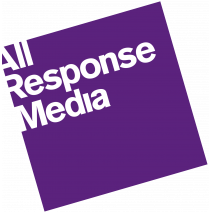The German market has huge potential. A population of about 83m and a 63m adult TV universe plus an estimated TV reach of 92% makes German TV a force for driving business growth.
Germans are also more likely than average to watch TV for longer, and crucially to discover brands through TV. The reward for e-commerce is high, as 82% of German web users buy products online vs. a 72% European average.
Charts from GlobalWebIndex (a panel surveying attitudes and behaviours of web users across Europe and the Middle East)
With this in mind, when tackling the German market, it is important to make the most of the opportunity with the right creative.
Earlier this year, Screenforce Germany (an initiative of 12 partner media sales houses in Germany, Austria and Switzerland which focuses on TV research) joined forces with media sales house IP Germany to research how to create the most effective TV commercial. The project was called Mission Impact: Optimal Spot Design and set out to research how emotionality, type of images, image quality and various other factors can make an impact (from spot length, use of humour, emotion, celebrities, music etc) on TV results.
The research company interviewed 12,000 respondents (+2,000 more than AGF GFK/German BARB equivalent measurement panel), reviewed 400 TV commercials covering the finance, e-commerce, fashion, tourism and retail industry. KPIs measured using survey responses where fairly brand-focused; spontaneous brand awareness, aided brand awareness, commercial assessment and brand Rating.
In summary, the results showed that;
- Image quality and emotion had the biggest impact on brand KPIs.
- Consistency, positivity and humour all had a positive impact.
Unsurprisingly, results varied by sector. In finance, well-known brands saw the best results, particularly from ‘brand story’ and emotion ads with a consistent and logical structure (avoiding information overload). In e-commerce, ads delivered the lowest average brand awareness and commercial rating or ‘likeability’, but primarily due to more time often being spent on product explanation (vs. brand stories) due to a higher % of new/growing advertisers. Clarity was key, and one key finding in e-commerce was visibility of products for the longest time yielded the best results.
In the cosmetics industry, the study found that celebrity spokespeople were not a guarantee of success, but did generally have a positive effect on long-term awareness. For fashion, celebrities had even more of a positive impact – with high quality images and a more cinematic and brand-integrated approach delivering increased brand awareness and rating.
The travel industry scored highest for brand rating overall, brands who focused on travel destinations and included incentives like early booking discounts saw the best results.
In summary – creativity, professionality, showing your product and being completely clear about what it is and does without overloading with information were the keys to strongest awareness and ‘likeability’.
Importantly, however – in the retail sector there was a low correlation between the KPIs of spontaneous brand awareness and commercial/brand assessment. Ads were often liked, but not remembered or vice versa – a crucial balance to strike in your TV commercial creation.
So, what else do we know about the German consumer’s more tangible motivations to make the right creative decisions? (Source: GlobalWebIndex)
- 5% of Germans were interested in seeking an expert’s opinion before buying products, much less than the European average of 10%.
- They are more likely to be motivated by free delivery and an easy returns policy, and less interested in high social ‘likes’ or positive comments.
- On top of this, 80% of Germans valued sufficient information as a driver vs. 75% average in Europe, and only 37% tended to make decisions quickly or based on a ‘gut feeling’ (vs. 47% average).
- 25% of Germans only visit websites in their native language (a 10% over-index vs. the rest of Europe excluding the UK), highlighting the importance of a German-language ad and website for a consistent consumer Germany.
- German consumers prefer to be anonymous when using the internet 55% vs. a 50% average and are more likely to value a ‘guest’ check-out option.
All Response Media viewpoint
Then comes the crucial question: brand rating and awareness are important to any advertiser’s business, but what does this deliver in terms of financial results and business growth?
Our clients have seen good results when tweaking their creatives for the German market.
- One health product saw a 30% increase in web response-rate when switching their focus from driving to sales (via call) to driving to the website (and allowing consumers more information, avoiding the ‘gut feeling’ push to purchase).
- A charity advertiser saw 3x increased response-rates when introducing a new creative which focused more heavily on informing of the services the charity provided.
Now we know these insights can make a difference, here are your top tips for creating an ad that works in Germany (and anywhere for that matter!)
- As with all response-driving DRTV adverts, ensure your call to action is visible and clear throughout the ad.
- Ensure professionality and high image quality.
- If viable, include price and delivery (e-commerce) or early booking (travel) incentives in the ad.
- Ensure your product is clearly explained and visible throughout.
- Drive to or provide a website in German with clear product information, a guest checkout option (and all relevant payment types for the German audience).
- Deliver media campaigns spanning enough time to build up frequency with consumers.
The right direct response advert for the German TV market stands you in good stead to take advantage of its significant DRTV opportunity.
Read more information on our TV services.

